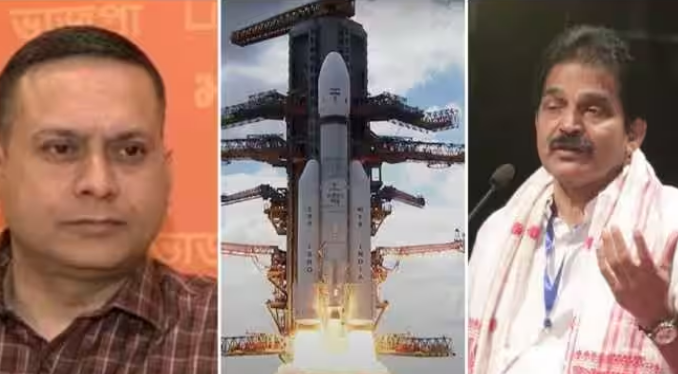
New Delhi: While the launch of Chandrayaan-3 was a proud moment for all, the Bharatiya Janta Party (BJP) and Congress clashed on social media after both claimed credit for the ISRO’s third lunar mission. Congress leader KC Venugopal tweeted that ISRO was a vision of the first Prime Minister Pandit Jawahar Lal Nehru and was supported and advanced by subsequent Congress PMs such as Indira Gandhi, Rajiv Gandhi and Dr Manmohan Singh during their tenure. However, the BJP did not take it lightly with party leader Amit Malviya terming it a desperate attempt by Congress to claim credit for the Chandrayaan 3 launch. Malviya said that out of 424 foreign satellites launched by ISRO so far, 389 were launched in the last nine years under Prime Minister Narendra Modi’s leadership.
“The ISRO dreamt of by Pandit Nehru, nurtured by Indira Gandhi ji, and taken to great heights by Rajiv Gandhi ji and Dr. Manmohan Singh ji achieves a new milestone! A proud moment for all, as we excitedly watch the #Chandrayan3 take off to conquer the moon! Jai Hind,” tweeted KC Venugopal.
Responding to his tweet, Malviya said, “Small fact is that Nehru died in May 1964 and ISRO was established on Aug 1969. It doesn’t end there… Out of 424 foreign satellites launched till date by India, 389 were launched in the last nine years, under Prime Minister Narendra Modi’s premiership. A mere 35 were launched before 2014. It is obvious that Nehru did precious little, except dream… What is worse is that no one from Indira to Manmohan took Nehru’s dream seriously.”
ISRO’s Chandrayaan 3 lifted off from Sriharikota launch pad in Andhra Pradesh at 2.35 pm on Friday and was successfully placed into orbit by ‘Fat Boy’ LVM3 – M4 rocket.
Despite the heat and dry weather, more than 10,000 space enthusiasts from Tamil Nadu, Andhra Pradesh and Karnataka watched the launch from the special space gallery set up by ISRO near the main entrance of the Satish Dhawan Space Centre (SDSC).
Scientists said that after the lift-off at 2.35 pm on Friday, the propulsion module would separate from the rocket after about 16 minutes and would orbit the earth for about 5-6 times in an elliptical cycle with 170 km closest and 36,500 km farthest from earth moving towards the lunar orbit. If everything goes well, the spacecraft will land on the moon on August 23.
Bureau Report
Leave a Reply